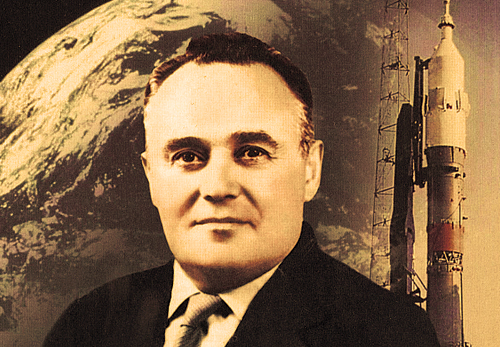INDIAN ARMED FORCES CHIEFS ON OUR RELENTLESS AND FOCUSED PUBLISHING EFFORTS

The insightful articles, inspiring narrations and analytical perspectives presented by the Editorial Team, establish an alluring connect with the reader. My compliments and best wishes to SP Guide Publications.

"Over the past 60 years, the growth of SP Guide Publications has mirrored the rising stature of Indian Navy. Its well-researched and informative magazines on Defence and Aerospace sector have served to shape an educated opinion of our military personnel, policy makers and the public alike. I wish SP's Publication team continued success, fair winds and following seas in all future endeavour!"

Since, its inception in 1964, SP Guide Publications has consistently demonstrated commitment to high-quality journalism in the aerospace and defence sectors, earning a well-deserved reputation as Asia's largest media house in this domain. I wish SP Guide Publications continued success in its pursuit of excellence.
Sergei Korolev (1907-1966)
The first objective of Korolev’s project was met when Vostok 1 carried the world’s first cosmonaut Yuri Gagarin into space on April 12, 1961. It proved that human spaceflight was possible, beating the US attempt by three weeks.

Once of the fiercest chapters of the bitter Cold War rivalry between the United States and the Soviet Union in the latter half of the 20th century was the Space Race. Although it may seem incredible today it was the Soviet Union that was clearly the winner for several years after the race began. This was mainly due to Sergei Korolev, the leading Soviet rocket engineer and spacecraft designer. Among his many firsts was the launch of the world’s first artificial satellite, the world’s first space passenger (a dog), the first human in space, and the first unmanned vehicles to orbit and ultimately soft land on the moon. There was also the world’s first multi-person spacecraft, the first spacewalk, the first artificial object to make contact with another celestial body, the first picture of the far side of the moon, and the first missions to Venus and Mars.
Sergei Pavlovich Korolev, was born on January 12, 1907, in Zhytomyr, in present-day Ukraine. In 1924, he entered the Kyiv Polytechnic Institute, where he joined a glider club and designed his first glider. In college the famous aircraft designer Andrei Tupolev was his inspiration and guide. Korolev earned a degree in aeronautical engineering in 1930. Later he qualified as a pilot and became interested in rocketry. In 1933, he successfully launched the first liquid-fuelled rocket in the Soviet Union. The Soviet military, realising the enormous significance of this achievement, encouraged him.
However, disaster struck in June 1938 when Korolev and other aerospace engineers were falsely denounced to the NKVD – the Soviet secret police – during the “Great Purge”, Joseph Stalin’s campaign to eliminate his political rivals. Korolev was accused of subversion and thrown into one of the most notorious gulags, or forced labour camps, in Siberia. He was tortured, lost most of his teeth, his knee was badly injured and his heart was affected. Later Stalin, realising the importance of aeronautical engineers in preparing for a possible war with Nazi Germany, recalled Korolev and others to develop new weapons. Korolev was eventually released in 1944.
In 1945, Korolev was even made a colonel in the Red Army and sent to Germany. The Soviets had captured the Nazi V2 rocket stores and wanted to use them to develop their own missiles. They knew that only Korolev could do that. Korolev was an extreme workaholic. He slept for only a few hours a night and lived frugally. On August 21, 1957, he oversaw the launch of the R-7 Semyorka, the world’s first intercontinental ballistic missile (ICBM). It was a two-stage rocket with a maximum payload of 5,400 kg, sufficient to carry the Soviet nuclear bomb an impressive distance of 7,000 km. The Soviets beat the US by a full 15 months in this important milestone of the Cold War arms race.
Next came Sputnik. It was an unmanned orbital carrier rocket designed by Korolev and derived from the R-7 ICBM. On October 4, 1957, it achieved the world’s first satellite launch, placing Sputnik 1 into a low earth orbit. Sputnik 1 was a tiny object just 58 cm in diameter. It had a battery-powered transmitter that beamed signals back to ground control. The world reacted with both amazement and fear. Four weeks later, on November 3, 1957, Sputnik 2 was launched. It was six times larger than Sputnik 1, and carried the dog Laika as payload. However, there was no system to recover the unfortunate animal.
This was followed by the Luna missions. Luna 2 successfully impacted the lunar surface on September 14, 1959, giving the Soviets another feather in their cap. And Luna 3, launched on October 7, 1959, became the first spacecraft to photograph the far side of the moon. Korolev then began a campaign to send a Soviet cosmonaut to the moon. The first objective of Korolev’s project was met when Vostok 1 carried the world’s first cosmonaut Yuri Gagarin into space on April 12, 1961. It proved that human spaceflight was possible, beating the US attempt by three weeks. However, on May 25, 1961, President John F. Kennedy put the US in mission mode to land an astronaut on the moon by the end of the decade. And Korolev’s health was rapidly deteriorating.
In January 1966, Sergei Korolev was admitted to hospital for routine surgery. But during the procedure, on 14 January, he bled severely on the operating table. Doctors tried to stabilise him but he never regained consciousness and died later that day. Three weeks later, on February 3, Luna 9 landed on the moon, becoming the first spacecraft to make a lunar soft landing and to transmit pictures from the moon’s surface to earth. It was the last big Soviet first in space for a long time. The US Surveyor 1 mission achieved the same feat four months later.





